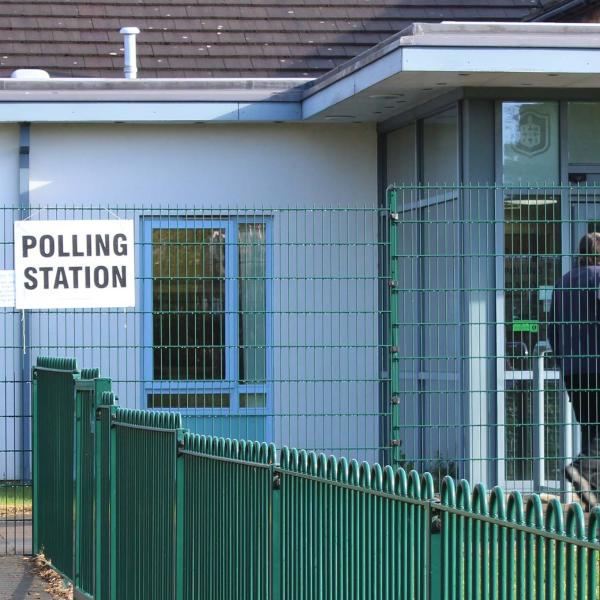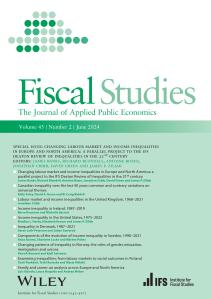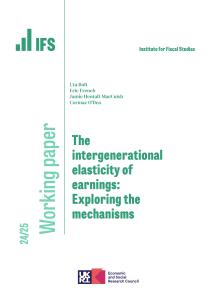Benefit cuts pushed up relative child poverty in the years running up to the pandemic, measured as living in a household with incomes below 60% of median income. However, based on asking their families whether they could afford essentials, the share of children in material deprivation fell by a quarter, from 24% in 2013 to 18% in 2019.
These are the nuanced findings from the IFS’s annual Living Standards, Inequality, and Poverty report, published today and funded by the Joseph Rowntree Foundation.
The worry for today is that behind these reductions in material deprivation was a fall in the relative prices of essential goods, particularly gas. With prices of food and energy currently rising particularly fast, material deprivation among children may start to rise in response.
The chapter looks into understanding trends in child poverty:
- Relative child povertyincreased from 27% in 2013 to 31% in 2019, its highest level since 2007. This means that the incomes of poorer families with children are falling further behind average incomes.
- In the years running up to the pandemic increases in employment income among low-income families with children were mostly offset by large cuts to the real value of working-age benefits.
- Increases in relative child poverty have been substantially larger for families with three or more children, with their relative poverty rate rising from 34% to 47% from 2013, higher than the 43% rate seen in 2007. These families have seen larger than average cuts to benefits due to policies such as the benefit cap and the introduction of the “two-child limit”.
However, in contrast rates of material deprivation for children fell sharply pre-pandemic.
- Low-income children were less likely to be materially deprived for any given level of household incomes, reflecting greater ability to afford essentials such as keeping their home warm and fresh fruit and vegetables.
- Most notably, the share of children below or close to the relative poverty line in 2019 whose families cannot afford adequate heating fell from 22% in 2013 to 12% in 2019, likely reflecting a 17% fall in the real price of gas over this period. The prices of clothing and unprocessed food also fell in real terms between 2013 and 2019.
- There was also some evidence that some families may be better able to support themselves through periods of low income. For families with children in the lowest fifth of household incomes, the share who have at least £2,000 of savings (adjusted for inflation) rosefrom 22% in 2010 to 33% in 2013 and 38% in 2019.
- Rising energy prices in particular may make it harder for some people to adequately heat their homes, and inflation is expected to bite hardest for low-income families. However, substantial government support has been targeted at families receiving means-tested benefits in particular.
Thomas Wernham, a Research Economist at the IFS and an author of the report, said:
“The share of children whose families couldn’t afford essentials fell substantially in the years leading up to the pandemic, even as income-based measures of child poverty flatlined or increased. A fall in the relative prices of essential goods such as gas, food, and clothing in the years before the pandemic is likely to have played a part in this reduction. The pre-pandemic reductions in child deprivation may go into reverse with particularly high energy price inflation and poorer families facing higher rates of inflation. This is why the government has targeted support for the rising cost of living at poorer families receiving means-tested benefits.”
Xiaowei Xu, a Senior Research Economist, and another author of the report, said:
“Cuts to working-age benefits since 2010 have pushed up relative child poverty despite rising employment incomes among poorer families with children. Large families have been particularly affected, since they are more reliant on benefits and have seen bigger reductions in entitlements as a result of the benefit cap and two-child limit. Relative poverty rates for this group may increase further with the rising cost of living, since the government has chosen to provide a flat rate of support for all families on means-tested benefits, which is smaller in percentage terms for large families receiving higher levels of benefits.”
Peter Matejic, Chief Analyst at the Joseph Rowntree Foundation, the funder of the report, said:
“This report highlights the powerful impact prices have on the living standards of families on low incomes. Overall material deprivation fell before the pandemic due to falling prices, but with inflation currently at a 40 year high and the basic rate of benefits at a 40 year low, we know large numbers of families are going without essentials once again.
It is unacceptable that going into the pandemic, a decade of cuts to working-age benefits drove child poverty to its highest level since 2007. It is critical that the Government act urgently to improve the adequacy of our social security safety net, with stopping benefit debt deductions at unaffordable rates being a necessary first step.”











